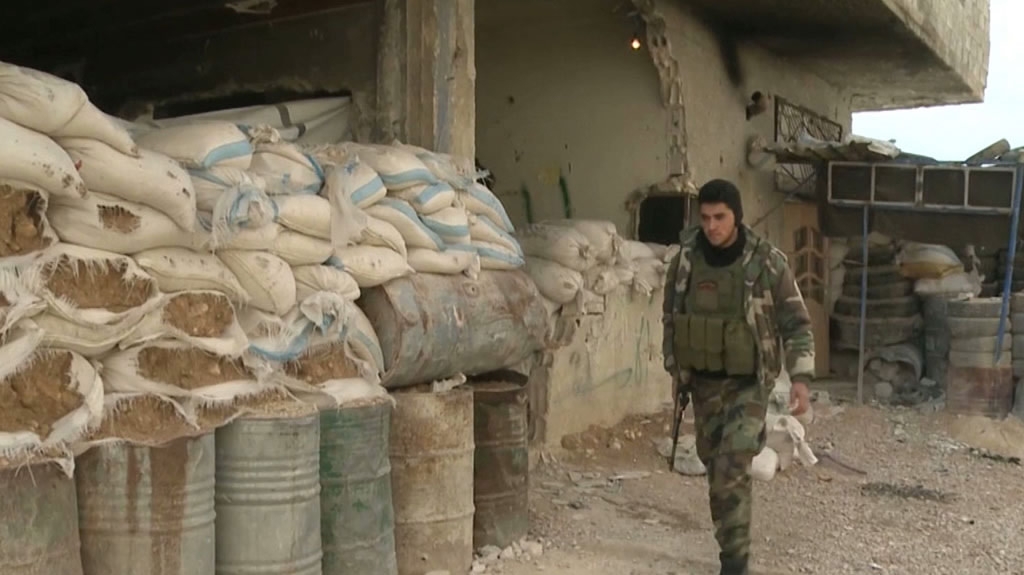
Politics
08:26, 01-Mar-2018
Syrian civilians not using humanitarian corridor out of Eastern Ghouta
By Alaa Ebrahim

Thousands of civilians remain trapped in Eastern Ghouta, Syria without humanitarian aid and no way out.
Syrian army soldiers removed barricades on the main road, clearing the way for civilians to escape the rebel enclave.
Along with the proposed five-hour daily pause in fighting, Russian and Syrian generals are hoping to convince civilians to leave.

Syrian civilians search for survivors amid the rubble of buildings destroyed earlier in regime air strikes, in the rebel-held besieged town of Douma in the eastern Ghouta region, on the outskirts of Damascus, February 28, 2018. /VCG Photo
Syrian civilians search for survivors amid the rubble of buildings destroyed earlier in regime air strikes, in the rebel-held besieged town of Douma in the eastern Ghouta region, on the outskirts of Damascus, February 28, 2018. /VCG Photo
This would be a prelude to a final combat offensive to push the rebels out.
But the plan has not worked so far. After the corridor opened on Tuesday, no civilians escaped the the insurgent enclave.
Syrian officers said their efforts to help people escape the fighting will take time.
Crossing a frontline isn’t easy, especially for families with children.
They will be traveling through areas that were scenes to some of the war’s most violent battles.

A Syrian army tank firing towards the area between the towns of Douma and Harasta, February 28, 2018. /VCG Photo
A Syrian army tank firing towards the area between the towns of Douma and Harasta, February 28, 2018. /VCG Photo
Syrian army officers said they would not keep the corridor open indefinitely.
Reminders of the atrocities that took place in Eastern Ghouta are easy to find. Soldiers said they could smell chemical weapons before humans.
Both the government and the opposition accuse each other of using toxic agents.
So nearly 400,000 civilians in the besieged enclave continue to wait.

SITEMAP
Copyright © 2018 CGTN. Beijing ICP prepared NO.16065310-3
Copyright © 2018 CGTN. Beijing ICP prepared NO.16065310-3